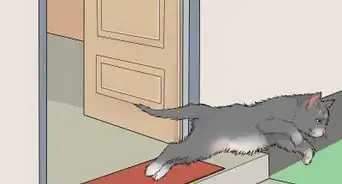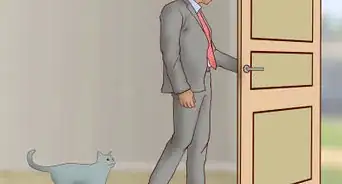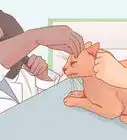This article was co-authored by Jessica Char. Jessica Char is a Cat and Dog Trainer, Behavior Consultant, and the Founder of Feline Engineering and Canine Engineering. She specializes in modifying challenging pet behavior problems, such as fear and aggression, using positive reinforcement training protocols. Jessica is a Certified Fear Free Trainer, a Certified Professional Dog Trainer, and a Certified Separation Anxiety Trainer. She is also a member of the International Association of Animal Behavior Consultants. Jessica received her BS and MS in Biomedical Engineering from Washington University in St. Louis.
This article has been viewed 32,203 times.
Cats can be fearful by many things, including being threatened by a dog, or being forced to go to the vets. Unfortunately, a fearful cat can often be mistaken for an aggressive cat. This is because as a cat begins to feel more and more fearful, she may feel that the only option she has is to attack. In order to keep your cat from attacking you out of fear, it is important to know how to recognize a cat that is afraid by recognizing body language, listening for vocalization, and responding to frightened silhouettes.
Steps
Recognizing Fearful Body Language
-
1Understand that fear manifests itself physically in cats. A fearful cat is in a state of physiological arousal. She has adrenaline, the fight-or-flight hormone, racing through her bloodstream. This stimulates the sympathetic nervous system to supply extra blood to her heart and muscles so that she is prepared for action. To spot signs of adrenaline, read the following steps.
-
2Look for dilated pupils. Cats have slit-like pupils, which become large and round either in the dark (to gather more light) or when a cat is fearful, or aroused. Her pupils become dilated to maximize her vision.[1]
- Look at your cat’s eyes; if they look predominantly black, her pupils are dilated.
Advertisement -
3Watch out for wet paw prints. The only place cats have sweat glands is on the pads of their feet. Just as we sweat in a tense situation, so do cats. Look for wet paw prints on the floor or table top.
- If your cat will let you, you can also touch the pads of your cat’s feet to see if they feel wet.
-
4Feel for an increased heart rate. To supply blood to the muscles in preparation for action (flight or attack) your cat’s heart rate will increase. A normal heart rate is 120 to 140 beats per minute.
- A frightened cat's heart rate accelerates to 180 beats per minute or above.
-
5
-
6Check if the cat’s whiskers are drawn back. When your cat is afraid, she will flatten her whiskers against her face. If your cat’s whiskers are pressed against your cat’s muzzle, it is very likely that she is frightened.
-
7Watch for movement of the cat’s mouth, lips and nose. While the inner conflict remains mild, the cat's mouth and lips will remain in a neutral position. As the cat’s fear intensifies to the point where action (fleeing or fighting) is increasingly likely, the cat's mouth draws back at the corners to reveal her teeth in a snarl.
- As the cat's fear arousal grows she will wrinkle her nose as part of the movement to draw her lips back in a snarl.
Listening For Vocalisation
-
1Be aware that purring can sometimes be a sign of mild fear or pain. In a situation where a cat feels mildly threatened, she may become silent or begin to make a deep purring sounds. This may sound counter-intuitive, but some cats do purr when they are in pain or are scared in order to comfort themselves.
- It is thought that purring releases chemicals called endorphins, which have a comforting effect.
-
2Listen for hissing as the threat to the cat intensifies. As the threat intensifies, such as when a cat is confronted with an approaching dog, the cat will begin to hiss.[4] [5]
- The cat will open her mouth and release a hissing noise that sounds almost like she is trying to get something out of the back of her throat.
-
3Listen for growling and snarling. If the hiss does not put off whatever is making the cat uncomfortable, then the fearful cat will emit a series of long, slow exhalations to make a growling sound.[6]
- This is accompanied by snarls, which involve the cat retracting her lips to fully show her powerful canine teeth.
-
4Be prepared for hissing, spitting and lashing out with the paws. The previous displays are designed as "distancing signals". The intention of these signals is to notify the aggressor that the cat is not happy, and is preparing to defend herself. If the thing that is making the cat uncomfortable is not dealt with, and the cat sees no escape route, then she may hiss, spit and, as a last resort, lash out with her claws extended.
Identifying Fearful Silhouettes
-
1Understand that there are two types of fear silhouettes: submissive and aggressive. A fearful cat may adopt one of two body silhouettes, or stances, depending on whether she wishes to convey a submissive message (she is no threat to the would-be aggressor and she does not want to fight), or an aggressive message (she is fearful but prepared to fight).[7] [8]
-
2Recognize a submissive silhouette. In a submissive silhouette, or stance, cat will adopt a hunched, or crouched, sitting position with her tail tucked away between her back legs. These cats would far rather distance themselves from the danger by running away.
- If the threat continues and she is unable to escape, she will be forced into aggression.
-
3Identify an aggressive silhouette. The classic Halloween cat shape is an example of a fearful cat on the offensive. The hunched back, erect tail with a hook at the end, and erect fur are all attempts to make the cat look larger and more imposing than she really is.[9]
- The hook at the end of the tail is actually a sign that the cat is not feeling confident.
Community Q&A
-
QuestionI saw a cat outside just resting under a bush, so I sat on my knees very low and called it, but it just ran away. How can I prevent a cat from doing that?
 Community AnswerIf you want to catch it, then I would suggest setting some food outside. Some cats are just naturally scared of humans. Feral cats will never be comfortable interacting with humans. You will have to try to gain its trust by offering it food every day, and be patient. Don't try to come too close to it. Over time, it may start to come closer to you.
Community AnswerIf you want to catch it, then I would suggest setting some food outside. Some cats are just naturally scared of humans. Feral cats will never be comfortable interacting with humans. You will have to try to gain its trust by offering it food every day, and be patient. Don't try to come too close to it. Over time, it may start to come closer to you. -
QuestionMy strictly indoor cat hissed at my son yesterday, crouched really low to the ground, and did something strange with her left back leg. She then ran into the bedroom and remained under the bed.
 Community AnswerAsk your son if he did anything to the cat (even accidentally) that might have scared or hurt her (like stepping on her tail, making a loud noise, etc.). If so, remind him to be extra careful around the cat. If not, it would be a good idea to take your cat to the vet and get everything checked out. Unusual behavior like that can be a sign of illness or injury.
Community AnswerAsk your son if he did anything to the cat (even accidentally) that might have scared or hurt her (like stepping on her tail, making a loud noise, etc.). If so, remind him to be extra careful around the cat. If not, it would be a good idea to take your cat to the vet and get everything checked out. Unusual behavior like that can be a sign of illness or injury. -
QuestionHow can my cat go from loving to go into the garage for the last 4 years to potty, sleep, and look out the window for hours at a time several times a day to meowing and wanting in?
 Belle K.Top AnswererSomething might have scared your cat; maybe it was a bird flying into the window suddenly and scaring it. Try putting things that make your cat happy in the garage, like catnip or a kitty bed.
Belle K.Top AnswererSomething might have scared your cat; maybe it was a bird flying into the window suddenly and scaring it. Try putting things that make your cat happy in the garage, like catnip or a kitty bed.
References
- ↑ https://icatcare.org/advice/stress-in-cats/
- ↑ Jessica Char. Cat & Dog Behaviorist.
- ↑ https://icatcare.org/advice/stress-in-cats/
- ↑ Jessica Char. Cat & Dog Behaviorist.
- ↑ https://www.humanesociety.org/resources/how-help-frightened-cat
- ↑ https://www.humanesociety.org/resources/how-help-frightened-cat
- ↑ Jessica Char. Cat & Dog Behaviorist.
- ↑ https://www.vet.cornell.edu/departments-centers-and-institutes/cornell-feline-health-center/health-information/feline-health-topics/feline-behavior-problems-aggression
- ↑ https://www.vet.cornell.edu/departments-centers-and-institutes/cornell-feline-health-center/health-information/feline-health-topics/feline-behavior-problems-aggression


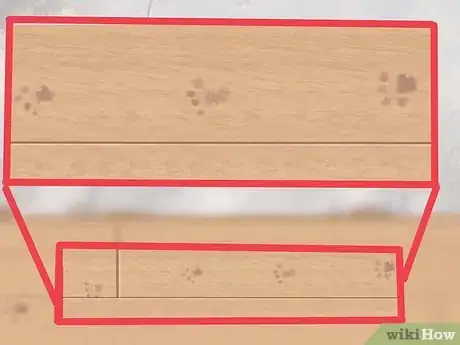
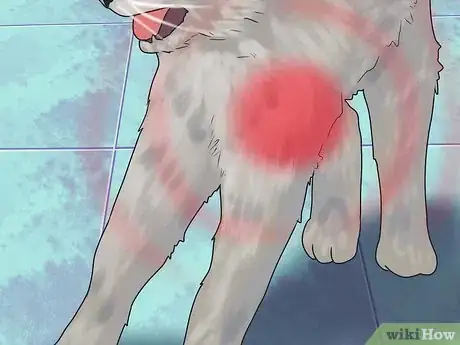

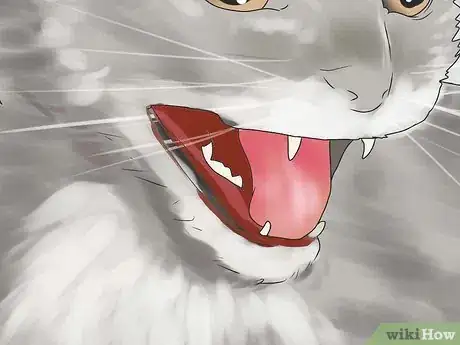

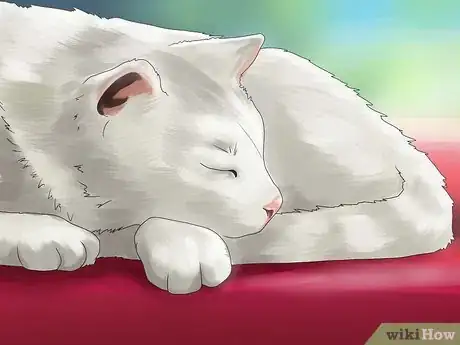
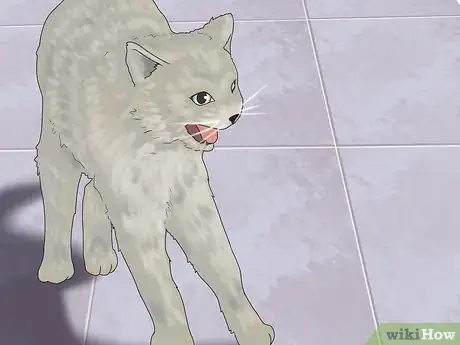

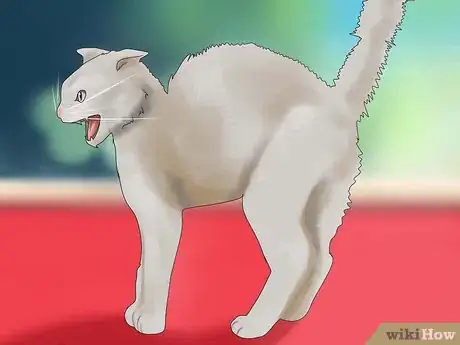
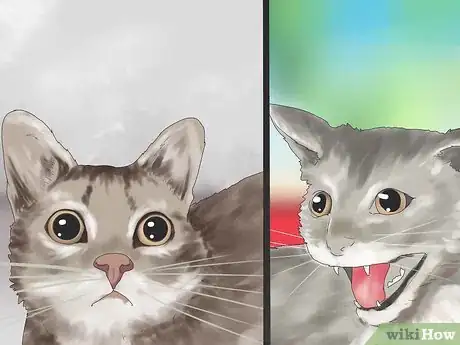
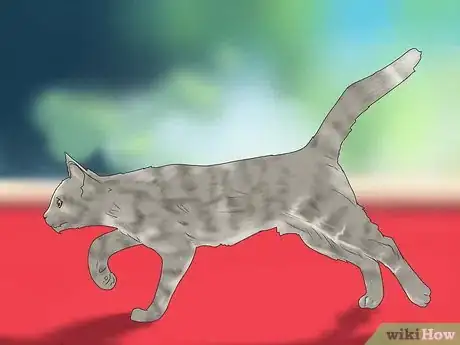

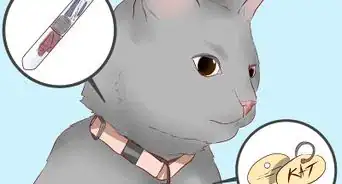




-Step-19.webp)

